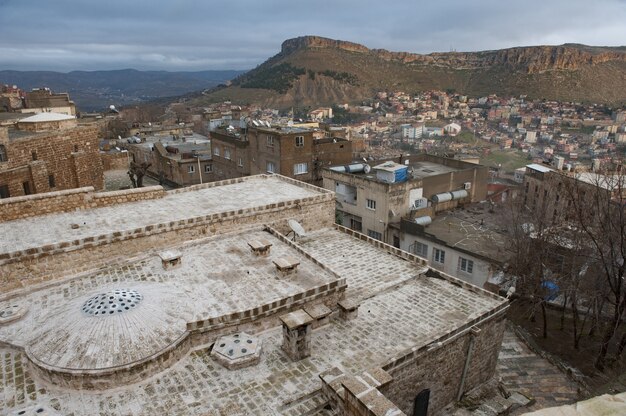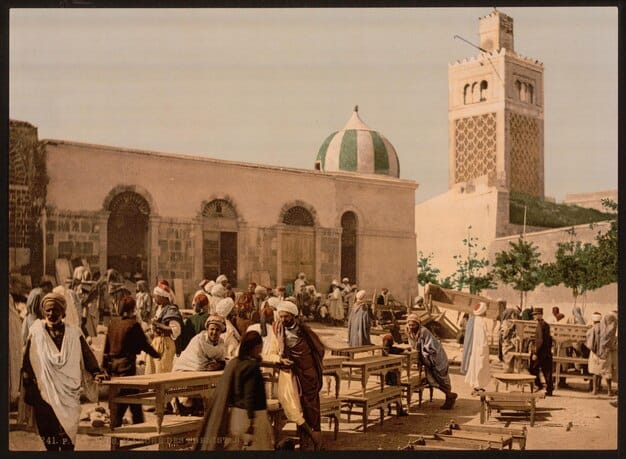
The Life of Prophet Muhammad: A Detailed Overview of His Early Years and Prophethood
Prophet Muhammad (peace be upon him) is one of the most influential figures in history, whose life and teachings have profoundly shaped human civilization. This detailed blog presents an in-depth look at his life before prophethood, key events during his prophetic mission, and his enduring legacy.
Early Life and Background

1. Pre-Prophethood Years (Before Age 40)
Birth and Family: Prophet Muhammad was born in 570 CE in Mecca, belonging to the Quraysh tribe, specifically the Hashimi clan. His father, Abdullah, had passed away before his birth, and his mother, Amina, died when he was just six years old. Consequently, he was raised under the care of his grandfather, Abdul Muttalib, and after his grandfather’s death, under his uncle, Abu Talib.
Characteristics Before Prophethood:
- Al-Sadiq (The Truthful) and Al-Amin (The Trustworthy): Muhammad’s reputation for truthfulness and trustworthiness was so prominent that he earned the titles “Al-Sadiq” and “Al-Amin” even before his prophethood. His fairness and integrity in trade earned him respect in Meccan society.
- Work and Family Life: Muhammad worked as a merchant and earned respect due to his ethical conduct. At the age of 25, he married Khadijah bint Khuwaylid, a wealthy and esteemed widow. Their marriage was a profound partnership marked by mutual respect and love. They had four daughters and two sons, but the sons died in infancy.
Prophet Muhammad’s Wives and Daughters
Khadijah bint Khuwaylid: Khadijah was Muhammad’s first wife and his earliest supporter. She passed away in 619 CE. After Khadijah’s death, Muhammad married several other women, but Khadijah’s death was a significant loss for him, and he always remembered her with respect and love.
Wives:
- Sawdah bint Zam’ah: Muhammad’s second wife, Sawdah, whom he married in 619 CE. Sawdah was a widow, and Muhammad’s marriage to her provided her with support.
- Aisha bint Abi Bakr: Aisha was Muhammad’s most well-known wife, with significant roles in religious and scholarly matters. They married in 623 CE. Aisha preserved many details of Muhammad’s life and spread his teachings through her knowledge and understanding.
- Hafsa bint Umar: Hafsa, the daughter of Umar ibn al-Khattab, married Muhammad in 625 CE. Hafsa was also a learned woman, and many aspects of her life are closely related to the Prophet’s life.
- Zaynab bint Khuzaymah: Zaynab, a widow, married Muhammad in 625 CE. She passed away in 626 CE, and their marriage was short-lived.
- Umm Salamah (Hind bint Abi Umayyah): Another of Muhammad’s wives, Umm Salamah, whom he married in 628 CE. Umm Salamah was a wise and influential woman who played an important role in Islamic history.
- Rayhanah bint Zayd: A wife of the Prophet accepted after the conquest of Khaybar. Details about Rayhanah are less documented, but she is part of Islamic history.
- Maymunah bint al-Harith: Maymunah was Muhammad’s last wife, married in 630 CE. She passed away in 651 CE and was also a respected figure.
Daughters:
- Zainab: Muhammad’s eldest daughter, married to Abu al-As ibn al-Rabi. Zainab passed away in 629 CE.
- Fatimah: Muhammad’s most renowned daughter, married to Ali ibn Abi Talib. Fatimah and Ali’s children, Hasan and Husayn, are significant figures in Islamic history. Fatimah passed away in 632 CE.
- Ruqayyah: Muhammad’s second daughter, married to Uthman ibn Affan. Ruqayyah died in 624 CE.
- Umm Kulthum: Muhammad’s third daughter, also married to Uthman ibn Affan. Umm Kulthum passed away in 630 CE.
The Declaration of Prophethood and Subsequent Years

2. Prophethood (After Age 40)
Revelation and Early Challenges: At the age of 40, Muhammad received the first revelation from Allah in the Cave of Hira through the angel Gabriel (peace be upon him). Initially troubled, he was reassured by his wife Khadijah and her cousin Waraka ibn Nawfal. This marked the beginning of his mission to spread Islam.
Characteristics After Prophethood:
- Mercy and Compassion: Muhammad’s mercy was evident in his treatment of the poor, orphans, and the oppressed. His teachings emphasized empathy, social justice, and kindness towards all humanity.
- Justice and Equality: As a Prophet and ruler, Muhammad established a system of justice. His laws were designed to protect individual rights and promote justice in all aspects of life.
- Patience and Resilience: His patience was especially notable during the early years of prophethood when he and his followers faced severe persecution. His resilience and non-violent resistance during these trials demonstrated his determination.
Teachings and Reforms:
- Islamic Monotheism: Muhammad’s central teaching was the oneness of Allah (Tawhid). He emphasized that Allah is the sole deity worthy of worship, and shirk (associating partners with Allah) was a fundamental principle of Islam.
- Moral Conduct: His teachings encompassed all aspects of life, including moral conduct, social justice, and personal behavior. Truthfulness, respect, and integrity were central to his message.
- Social Reforms: Muhammad introduced numerous reforms, including rights for women, the abolition of the practice of burying infant girls alive, and fair treatment of slaves and the poor. These reforms aimed to establish a more just and equitable society.
Key Events and Conquests:

- The Hijra to Medina (622 CE): Facing increasing persecution in Mecca, Muhammad and his followers migrated to Medina. This migration was a significant turning point, marking the beginning of the Islamic calendar and establishing a new center for Muslims.
- Battle of Badr (624 CE): This was the first major battle between the Muslims and the Quraysh of Mecca. Despite being outnumbered, the Muslims achieved a decisive victory, boosting their status and morale.
- Battle of Uhud (625 CE): This battle was a challenging encounter where the Muslims faced a setback. The battle highlighted the importance of discipline and strategy and tested the Muslims’ resolve and unity.
- Battle of the Trench (627 CE): Also known as the Battle of the Confederates, this was a siege of Medina by the tribes of Mecca. Under Muhammad’s leadership, the city was successfully defended, demonstrating strategic planning and patience.
- Treaty of Hudaybiyyah (628 CE): This treaty with the Quraysh was a significant diplomatic achievement, establishing a ten-year truce, allowing Muslims to perform Umrah, and reducing hostilities. It facilitated the peaceful spread of Islam.
- Conquest of Mecca (630 CE): The peaceful conquest of Mecca was a pivotal moment in Islamic history. Muhammad entered Mecca with a large army, and the city was conquered without bloodshed. He forgave his former adversaries and cleansed the Kaaba of idols, reestablishing it as a center for monotheistic worship.
Role as a Teacher, Ruler, and Human:
- As a Teacher: Muhammad was an exemplary teacher who conveyed his message through both words and actions. He used practical examples to explain complex spiritual and ethical concepts. His life itself was a living example of his teachings.
- As a Ruler: As the leader of the Muslim community, Muhammad established a model of governance based on justice, consultation, and accountability. The Constitution of Medina, a unique document, outlined the rights and duties of all inhabitants of the city, regardless of their religion.
- As a Human: Muhammad’s humanity was reflected in his humility, compassion, and dedication to his mission. He led a life of simplicity and cared deeply for the well-being of others. His interactions with his family, companions, and followers were filled with kindness and respect.
Conclusion
The life of Prophet Muhammad (peace be upon him) is a profound narrative of truth, leadership, and compassion. His character of honesty and trustworthiness set a standard for ethical conduct. His teachings and reforms laid the foundation for a just and compassionate society, while his conquests and leadership stabilized the early Muslim community. His legacy continues to inspire millions today and serves as a timeless example of nobility and commitment to a divine mission.
Reflecting on his early life and the stages of his prophethood helps us better understand human welfare and the lasting impact of his life and teachings.




